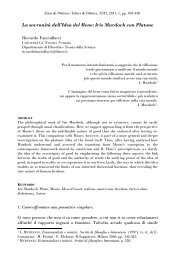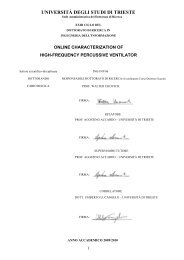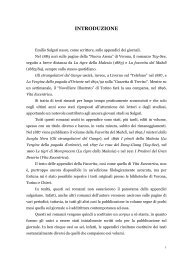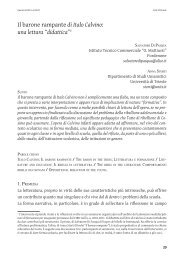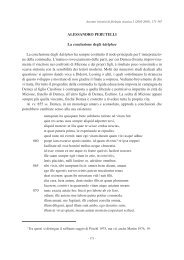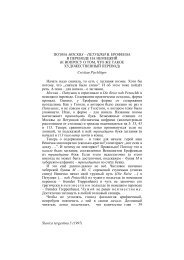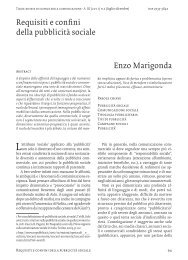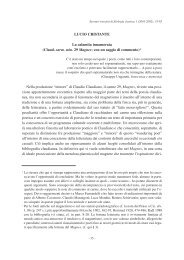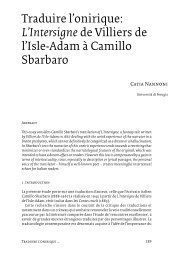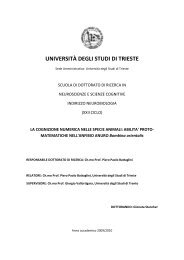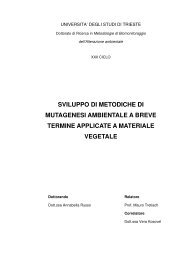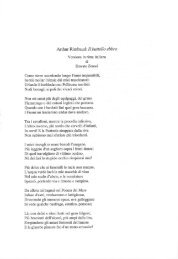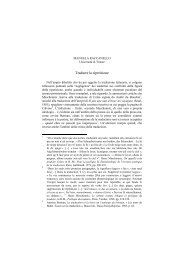Horizontal denominative variation in an EU victim ... - OpenstarTs
Horizontal denominative variation in an EU victim ... - OpenstarTs
Horizontal denominative variation in an EU victim ... - OpenstarTs
Create successful ePaper yourself
Turn your PDF publications into a flip-book with our unique Google optimized e-Paper software.
Daille 2005). Moreover, accord<strong>in</strong>g to the author, “appropriate typologies could<br />
be developed case by case” (Daille 2005: 183). The aim of the paper is thus not to<br />
propose a comprehensive <strong>an</strong>d systematic classification of term<strong>in</strong>ological vari<strong>an</strong>ts;<br />
we are, <strong>in</strong>deed, <strong>in</strong>terested <strong>in</strong> identify<strong>in</strong>g what type of modifications term<strong>in</strong>ological<br />
units are subject to <strong>in</strong> a guidel<strong>in</strong>e-controlled l<strong>an</strong>guage. The horizontal<br />
<strong>denom<strong>in</strong>ative</strong> vari<strong>an</strong>ts encountered <strong>in</strong> the exam<strong>in</strong>ed corpora c<strong>an</strong> be grouped <strong>in</strong><br />
five different categories: <strong>in</strong>flectional, syntactic, morphosyntactic, paradigmatic<br />
<strong>an</strong>d <strong>an</strong>aphorical <strong>variation</strong>. A further group is provided <strong>in</strong> which different types<br />
of <strong>denom<strong>in</strong>ative</strong> <strong>variation</strong> are comb<strong>in</strong>ed <strong>in</strong> the same term<strong>in</strong>ological unit.<br />
- Inflectional <strong>variation</strong><br />
The first category, <strong>in</strong>flectional <strong>variation</strong>, consists of vari<strong>an</strong>ts <strong>in</strong> which <strong>an</strong> orthographic<br />
modification occurs <strong>in</strong> the target text term due to <strong>an</strong> <strong>in</strong>flectional<br />
process which is not justified by a ch<strong>an</strong>ge <strong>in</strong> the source text term <strong>an</strong>d does not<br />
modify the sem<strong>an</strong>tic content of the orig<strong>in</strong>al term. This type of <strong>variation</strong> c<strong>an</strong> be<br />
illustrated by the follow<strong>in</strong>g example: the English moral damage is rendered <strong>in</strong><br />
Itali<strong>an</strong> both by the s<strong>in</strong>gular form d<strong>an</strong>no morale <strong>an</strong>d the plural form d<strong>an</strong>ni morali.<br />
- Syntactic <strong>variation</strong><br />
The second umbrella category is syntactic <strong>variation</strong>, under which two subcategories<br />
of vari<strong>an</strong>ts are grouped. The first subcategory comprises syntactic modifications<br />
that affect the function words perta<strong>in</strong><strong>in</strong>g to a certa<strong>in</strong> term<strong>in</strong>ological<br />
unit without requir<strong>in</strong>g a ch<strong>an</strong>ge <strong>in</strong> its content words, such as <strong>in</strong> the case of the<br />
substitution of a preposition, as <strong>in</strong> the equivalent terms for compensation to<br />
crime <strong>victim</strong>s, which are risarcimento delle vittime di reati <strong>an</strong>d risarcimento per le vittime<br />
di reati. The second syntactic subcategory, on the other h<strong>an</strong>d, affects the distribution<br />
of content words through, for <strong>in</strong>st<strong>an</strong>ce, permutation, such as <strong>in</strong> the<br />
follow<strong>in</strong>g example: sistemi di risarcimento nazionali <strong>an</strong>d sistemi nazionali di risarcimento<br />
for national compensation schemes.<br />
- Morphosyntactic <strong>variation</strong><br />
The third category of <strong>variation</strong> is represented by morphosyntactic vari<strong>an</strong>ts, <strong>in</strong><br />
which both the content <strong>an</strong>d the functional words of a term<strong>in</strong>ological unit are<br />
modified although without sem<strong>an</strong>tic ch<strong>an</strong>ge: the Itali<strong>an</strong> equivalents for state<br />
compensation to crime <strong>victim</strong>s are risarcimento statale delle vittime di reati <strong>an</strong>d risarcimento<br />
da parte dello Stato delle vittime di reati. In the just mentioned morphosyntactic<br />
example the first base term form<strong>in</strong>g the term<strong>in</strong>ological unit, state compensation,<br />
is rendered <strong>in</strong> Itali<strong>an</strong> by two equivalent but syntactically different forms:<br />
risarcimento statale follows the noun+adjective formation pattern, while risarcimento<br />
da parte dello Stato is <strong>an</strong> example of noun+prepositional group+noun pattern.<br />
- Paradigmatic <strong>variation</strong><br />
The fourth category is represented by paradigmatic <strong>variation</strong>, <strong>in</strong> which sem<strong>an</strong>tic<br />
equivalence is preserved although one of the base terms constitut<strong>in</strong>g the term<strong>in</strong>ological<br />
unit is entirely substituted by a different but synonymous term,<br />
such as <strong>in</strong> the follow<strong>in</strong>g example: compensation to crime <strong>victim</strong>s, apart from the<br />
184



